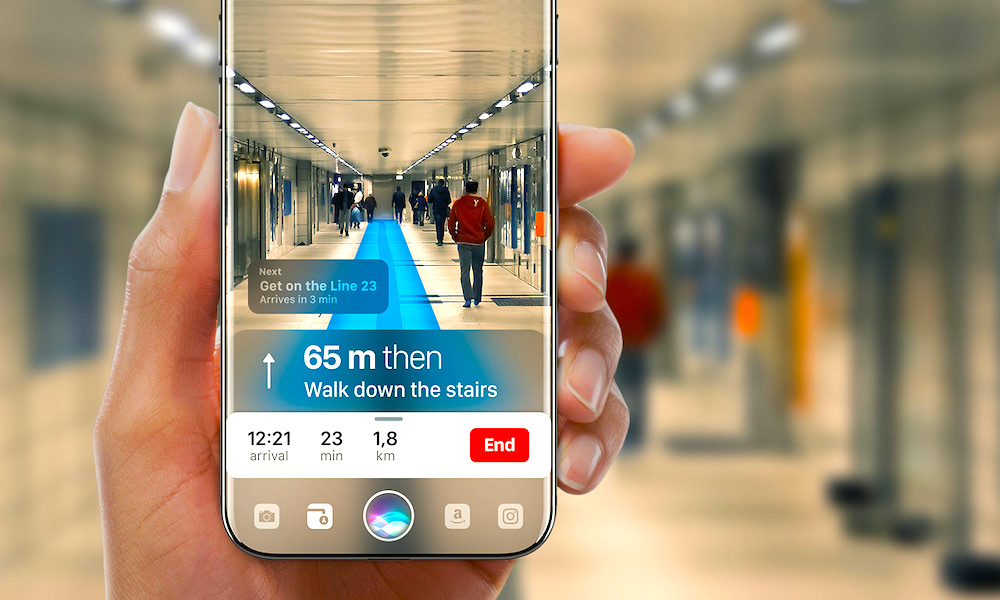2019 iPhones May Feature Indoor Navigation, Triple-Lens Cameras While Doubling As Wireless Chargers
 Credit: Gabor Balogh
Credit: Gabor Balogh
Toggle Dark Mode
With the 2018 iPhone lineup a few months behind us, we’re now starting to see reliable analysts offer some outlooks on what features Apple may have up its sleeve for its 2019 iPhone lineup. Well-connected analyst Ming-Chi Kuo, who has a pretty solid track record for making Apple product predictions based on supply chain information, released a new investor note yesterday outlining his expectations for this year’s iPhone lineup.
Firstly, Kuo believes Apple will continue to maintain the same three-model family — 6.5-inch and 5.8-inch OLED models accompanied by a 6.1-inch LCD model. While there have been previous rumours that Apple is planning to move entirely to OLED, more recent reports suggest that won’t be happening until at least 2020. Apple has also invested a fair amount of effort and resources in creating the “Liquid Retina” display for the iPhone XR last year, making it unlikely that the company would be ready to discontinue the technology so soon.
The new 5.8″ OLED may support DSDS, and the new 6.1″ LCD may be upgraded to 4GB. All of part of the new models’ main upgrades include Ultra-Wide Band (UWB) for indoor positioning and navigation, frosted glass casing, bilateral wireless charging for charging other devices, upgraded Face ID (with a higher power flood illumination), larger batteries, and triple camera feature (wide, telephoto, and ultra-wide lens).
Analyst Ming-Chi Kuo
Kuo’s other predictions are considerably more interesting, however, with suggestions that the new iPhones will provide larger batteries and the ability to act as wireless chargers, along with indoor positioning and navigation features, a frosted glass casing, and a triple-camera design. He also adds that the 6.1″ LCD model may get an upgrade to 4 GB of RAM, and more oddly that the “new 5.8″ OLED may support DSDS.” It’s less clear what he means by this last statement, as “DSDS” traditionally stands for “Dual-SIM Dual-Standby” which was already included on all of the 2018 iPhones, using a combination of a physical SIM card and eSIM outside of China, and two physical SIM cards for those sold in mainland China.
It’s been rumoured for a while that Apple would eventually incorporate a triple-lens camera system into at least some iPhone models, with several competing Android devices having already taken that step, and these rumours gained more traction earlier this year when it was reported that it could come to this year’s iPhone. In this regard, Kuo’s prediction mostly just confirms the original rumours, although he adds that two of the cameras would be wide and telephoto — likely similar to the dual-camera system already found on the iPhone XS models — with the third camera sporting an ultra-wide lens. While it seems likely that the triple-camera system would at most only be available on the two flagship OLED models, and possibly even just on the “Max” version, it’s unclear what this means for the 6.1″ LCD successor to the iPhone XR — whether it would continue to only incorporate a single camera or gain an upgrade to at least the current dual-camera system.
Predictions on the inclusion of Ultra-wideband (UWB) technology are an especially interesting new development. UWB is a short-range radio technology that can be used for precise positioning indoors, offering coverage where traditional GPS often barely works at all, along with a much greater degree of accuracy — as specific as four inches. Over the years Apple has toyed with ways to provide better indoor positioning in malls and stores — including of course its own retail stores — but this has traditionally relied on the deployment of Bluetooth beacons in strategic locations. UWB would allow users to more accurately navigate around areas such as airports, underground concourses, malls, and stadiums, as well as providing more accuracy for features like Find My iPhone and Find My Friends. While venues would need to deploy UWB transmitter systems, the inclusion of UWB receivers in iPhones could spur widespread adoption of this technology in much the same way that Apple Pay has done for contactless payments in the U.S.
One other interesting feature that Kuo predicts for this year’s iPhone lineup is the ability to work as wireless chargers, transmitting power to other devices. While this seems like a slightly odd feature for Apple to add, it makes some sense in light of Apple’s upcoming wirelessly-charging AirPods. It also lends a bit of weight to long-standing rumours that Apple might add Apple Pencil support to the iPhone, since that particular accessory can only be charged wirelessly.
Additional features that Kuo mentions in passing include a frosted glass casing and upgrades to Face ID that would include a higher-power flood illuminator. Kuo also corroborates other recent reports that Apple will be sticking with Lightning rather than USB-C for this year’s lineup.
Of course, as with most speculation at this point, nothing is certain, and while Kuo has a strong track record for making accurate predictions, his analysis comes from what he observes in Apple’s supply chain rather than any information from sources inside Apple.
[The information provided in this article has NOT been confirmed by Apple and may be speculation. Provided details may not be factual. Take all rumors, tech or otherwise, with a grain of salt.]






